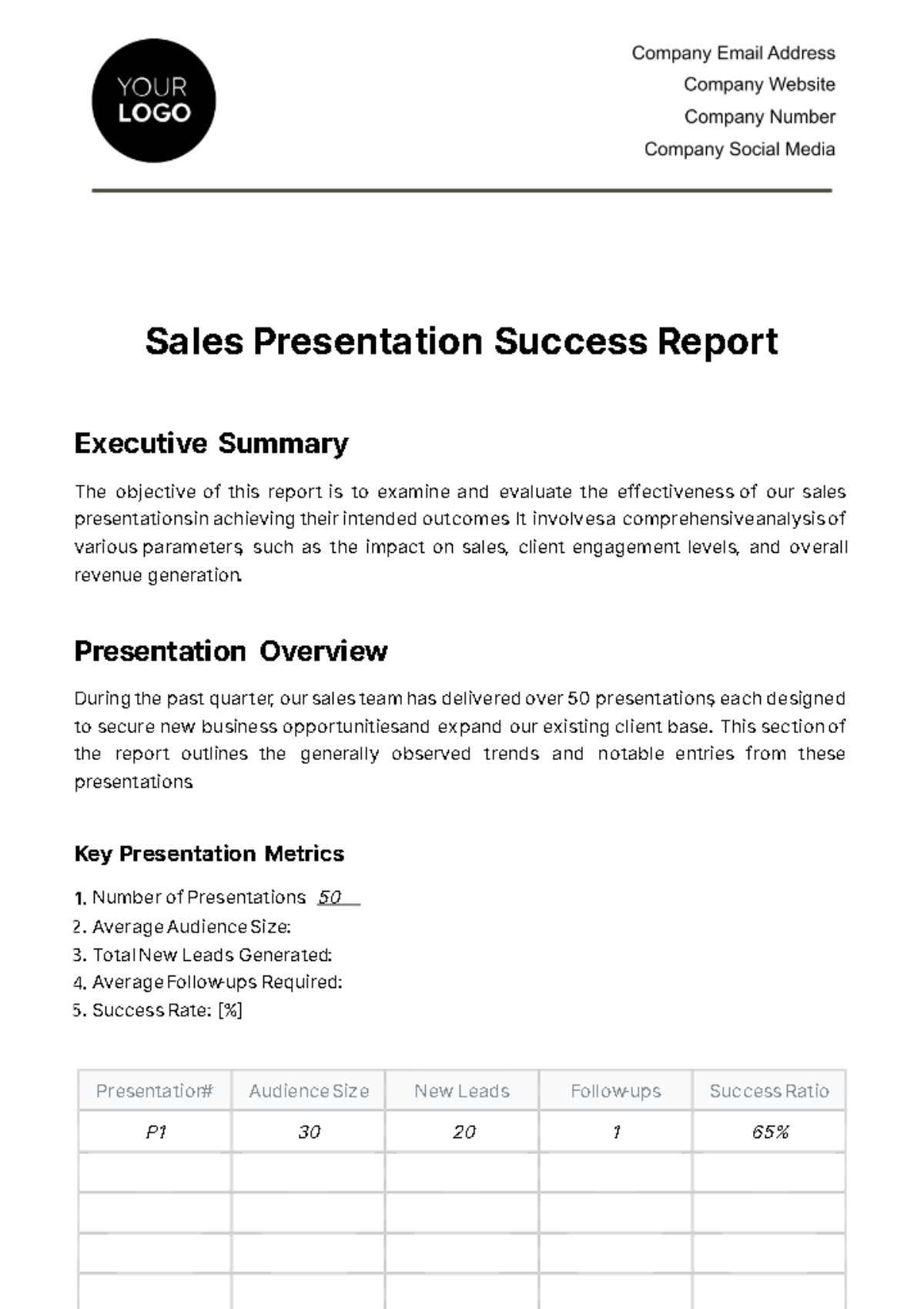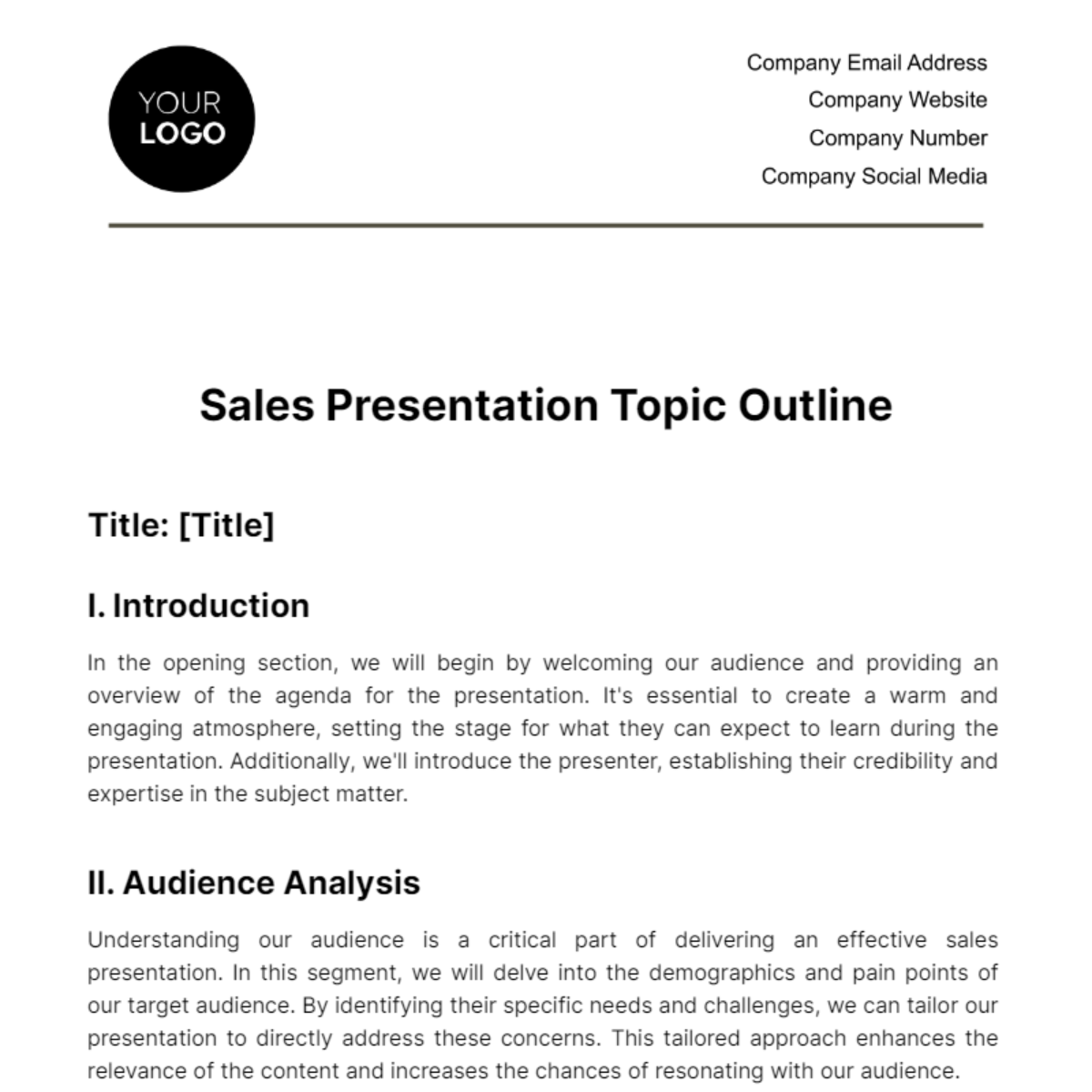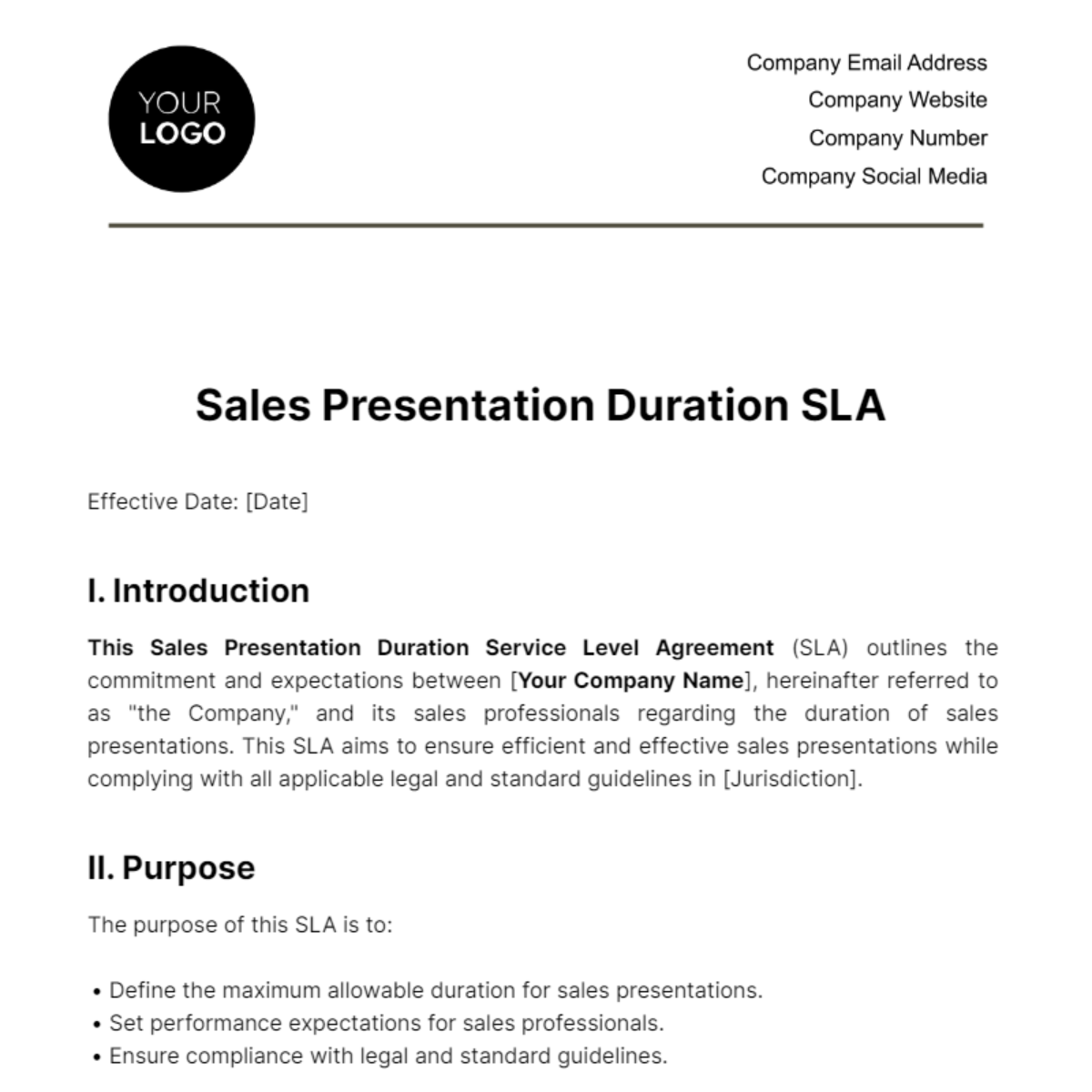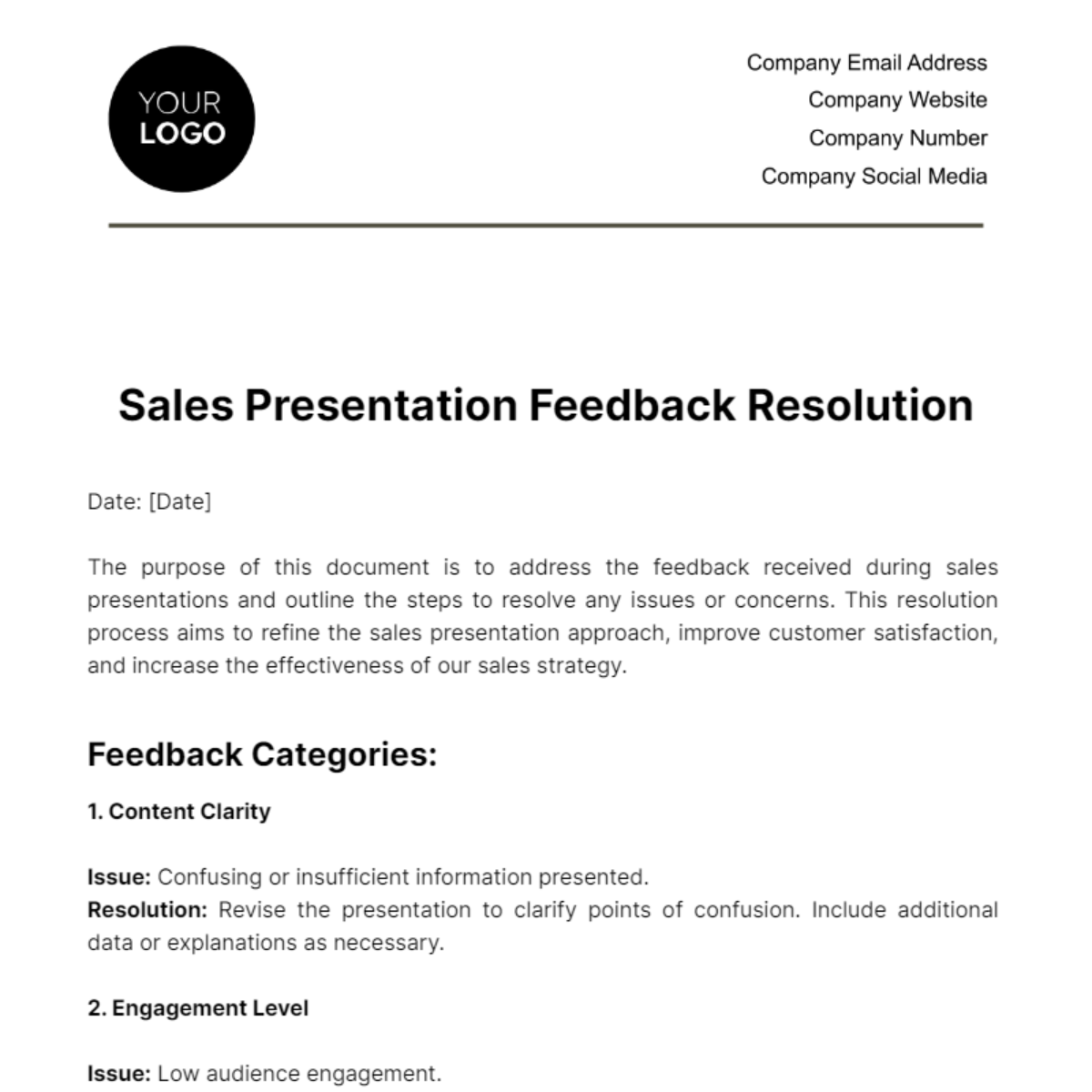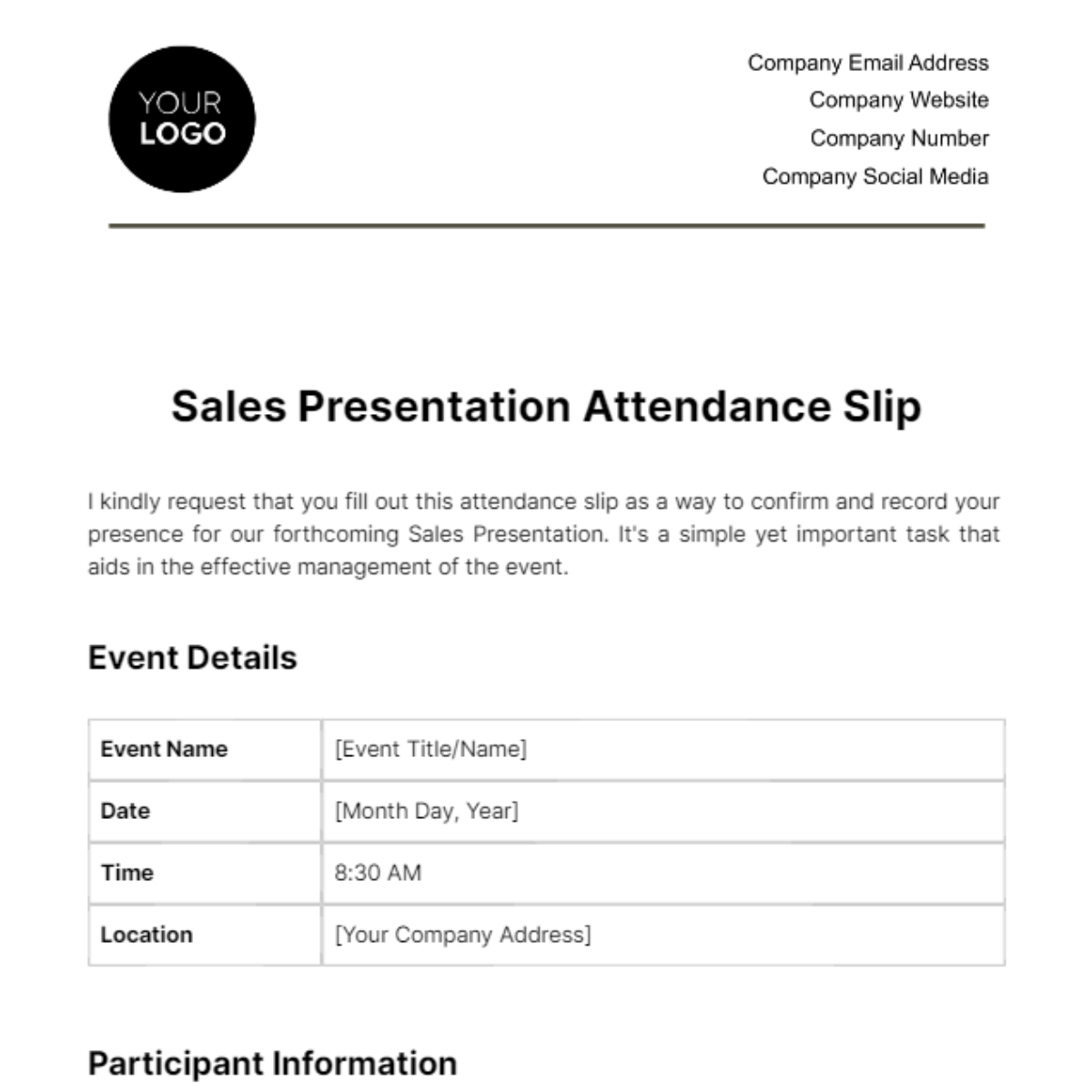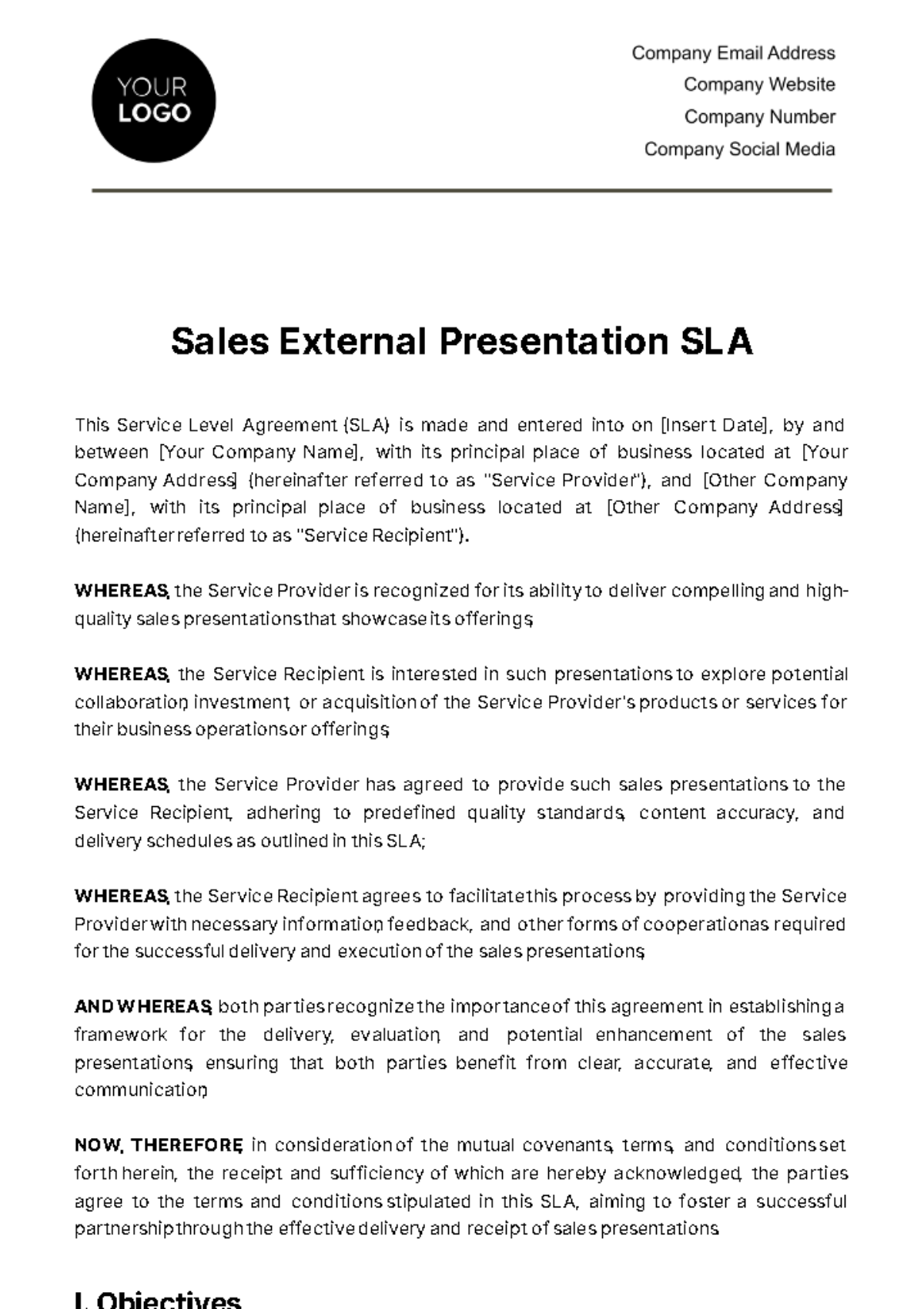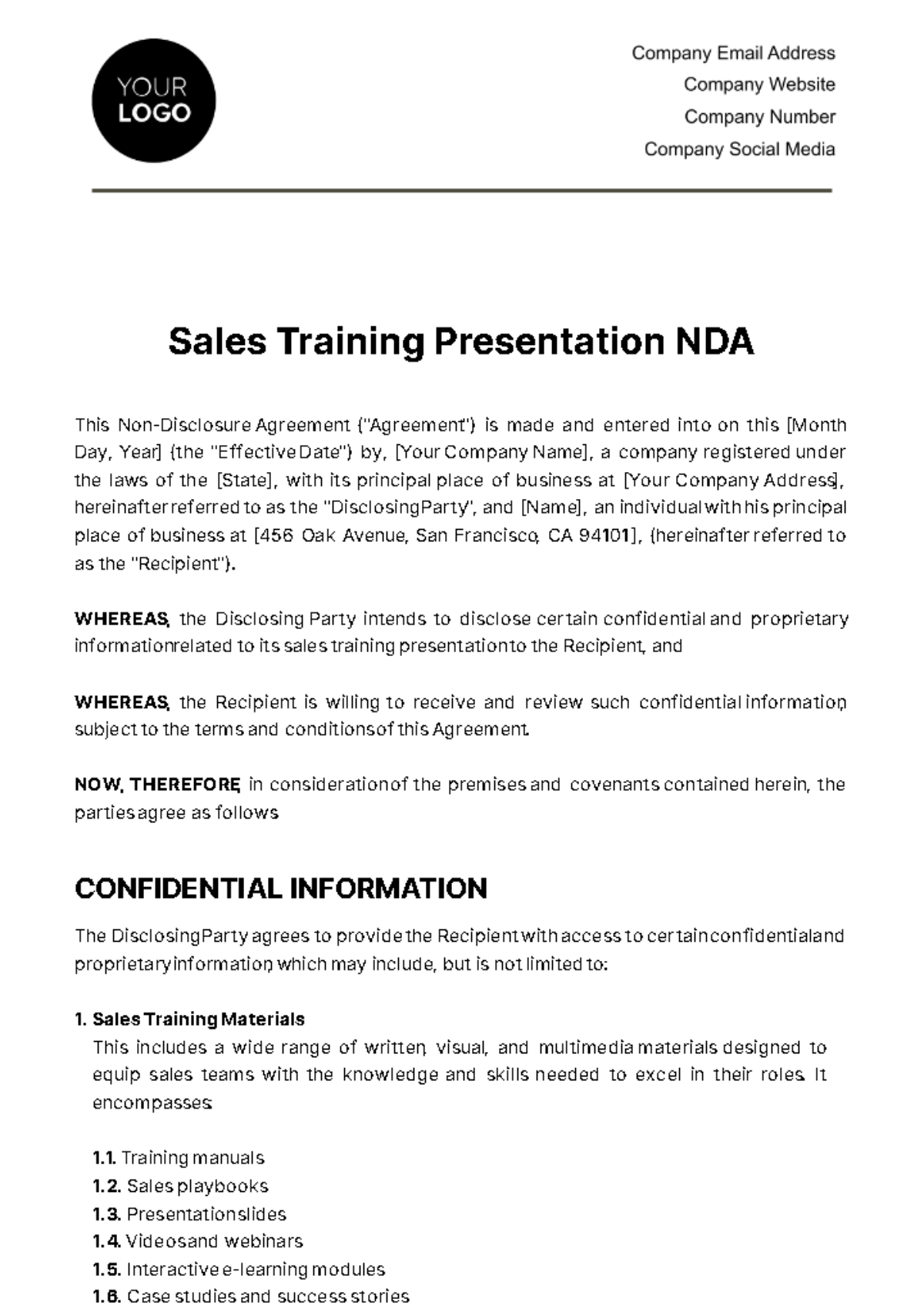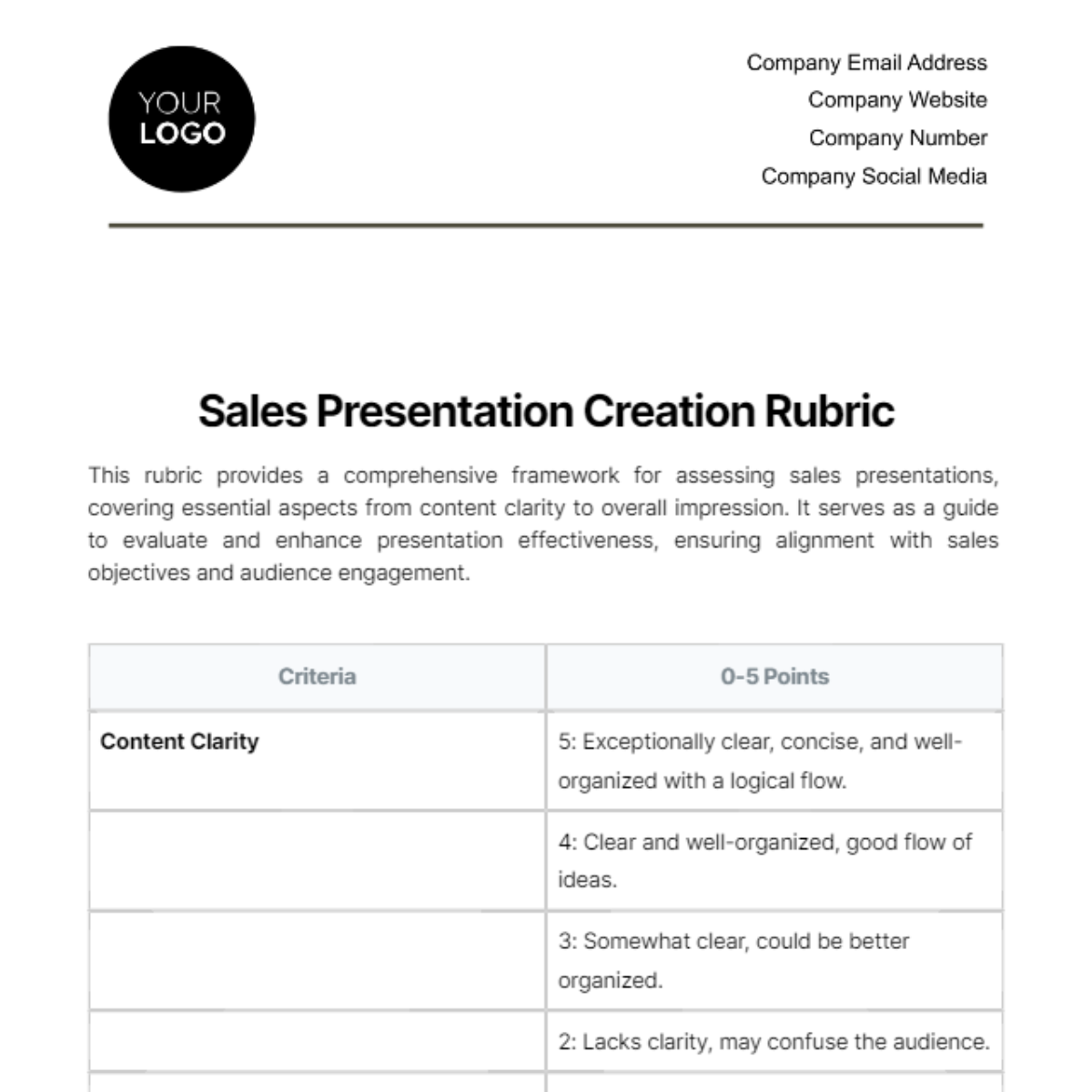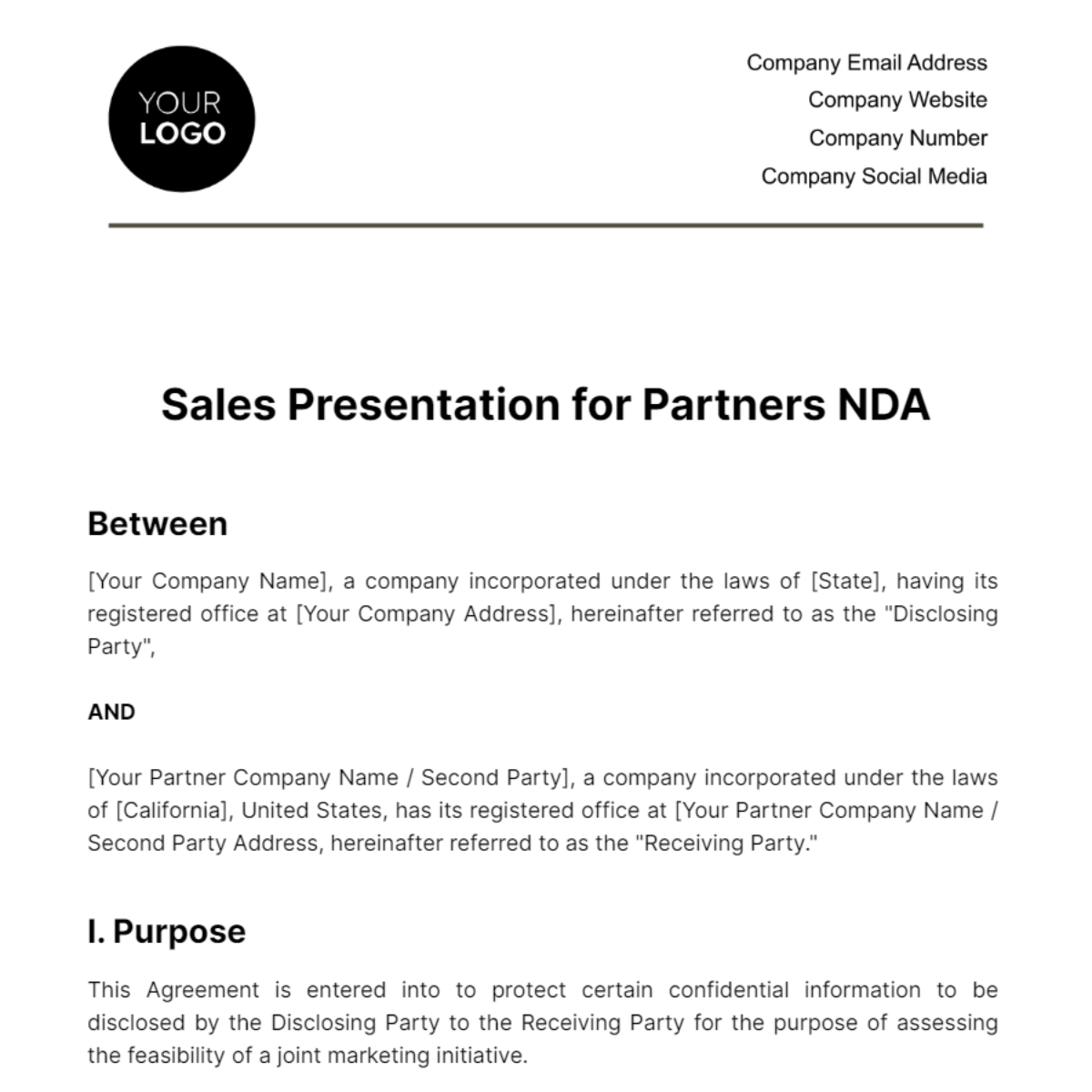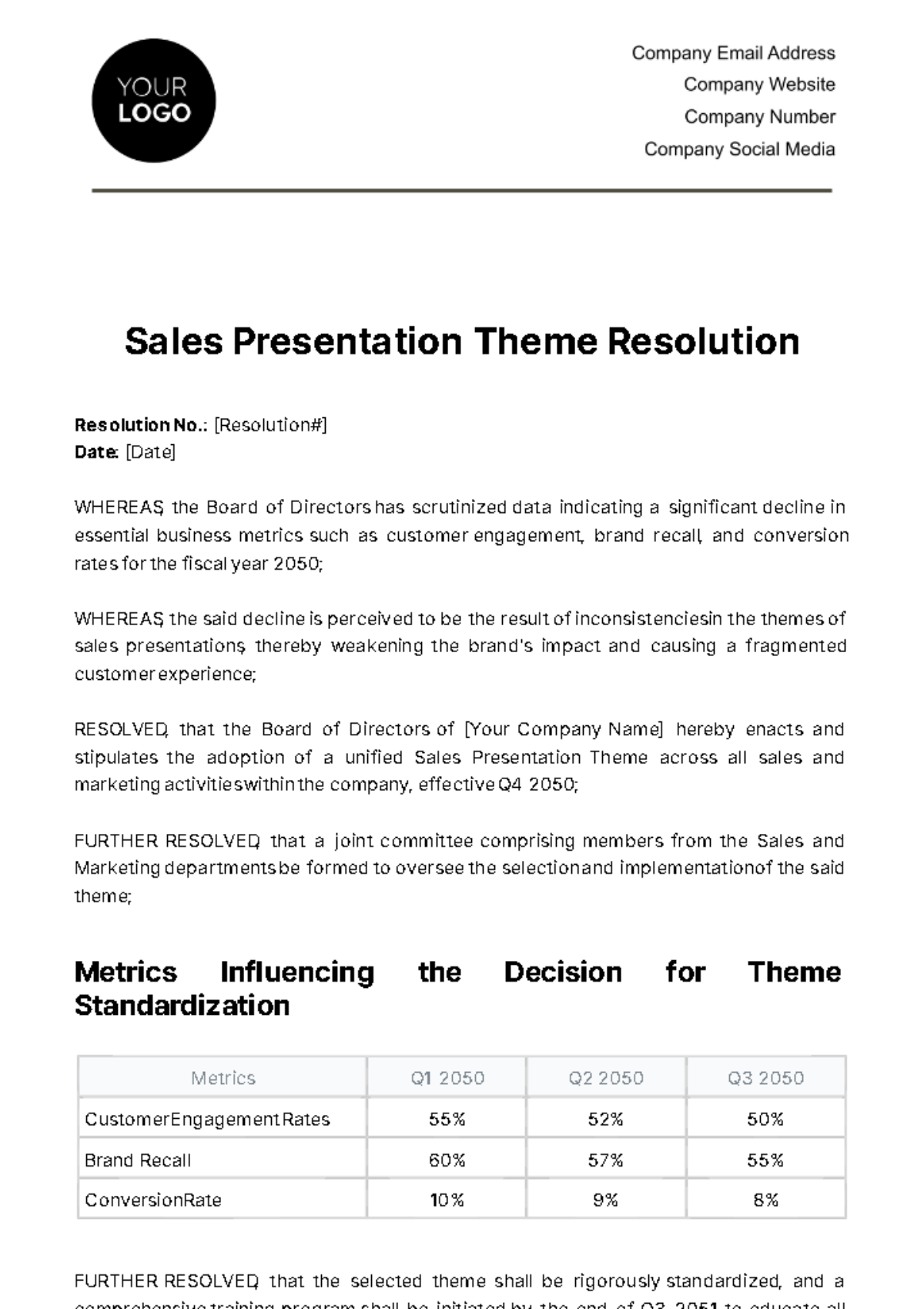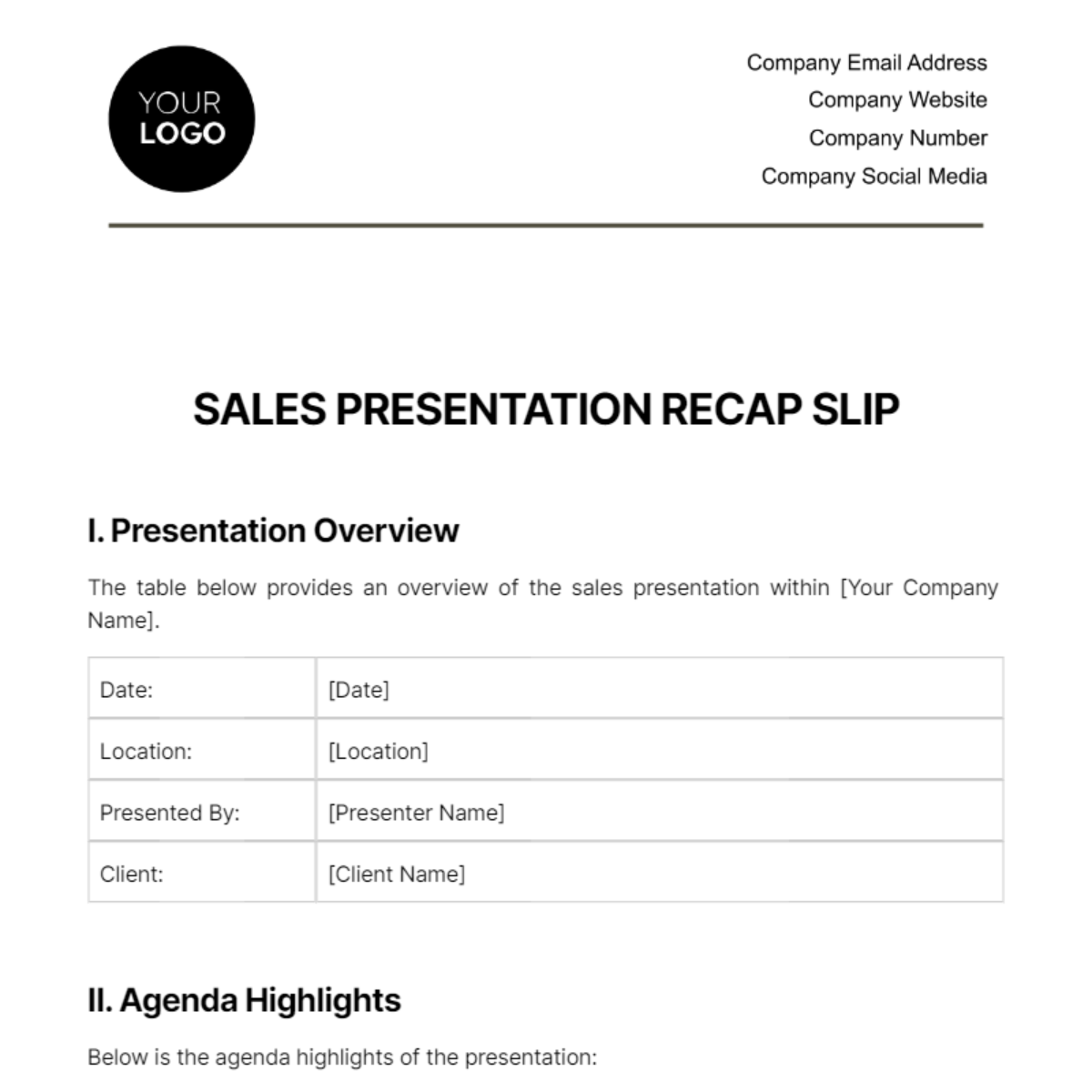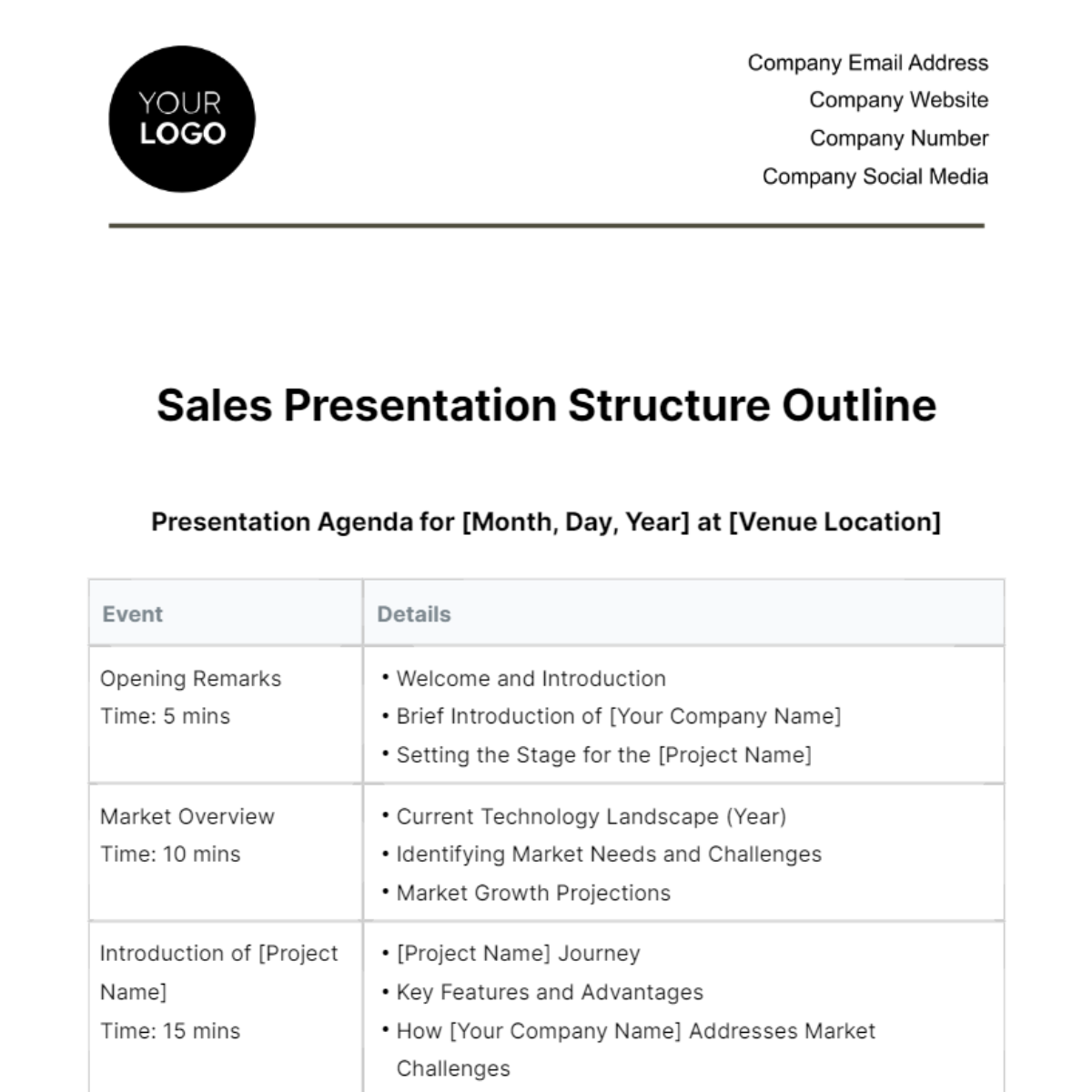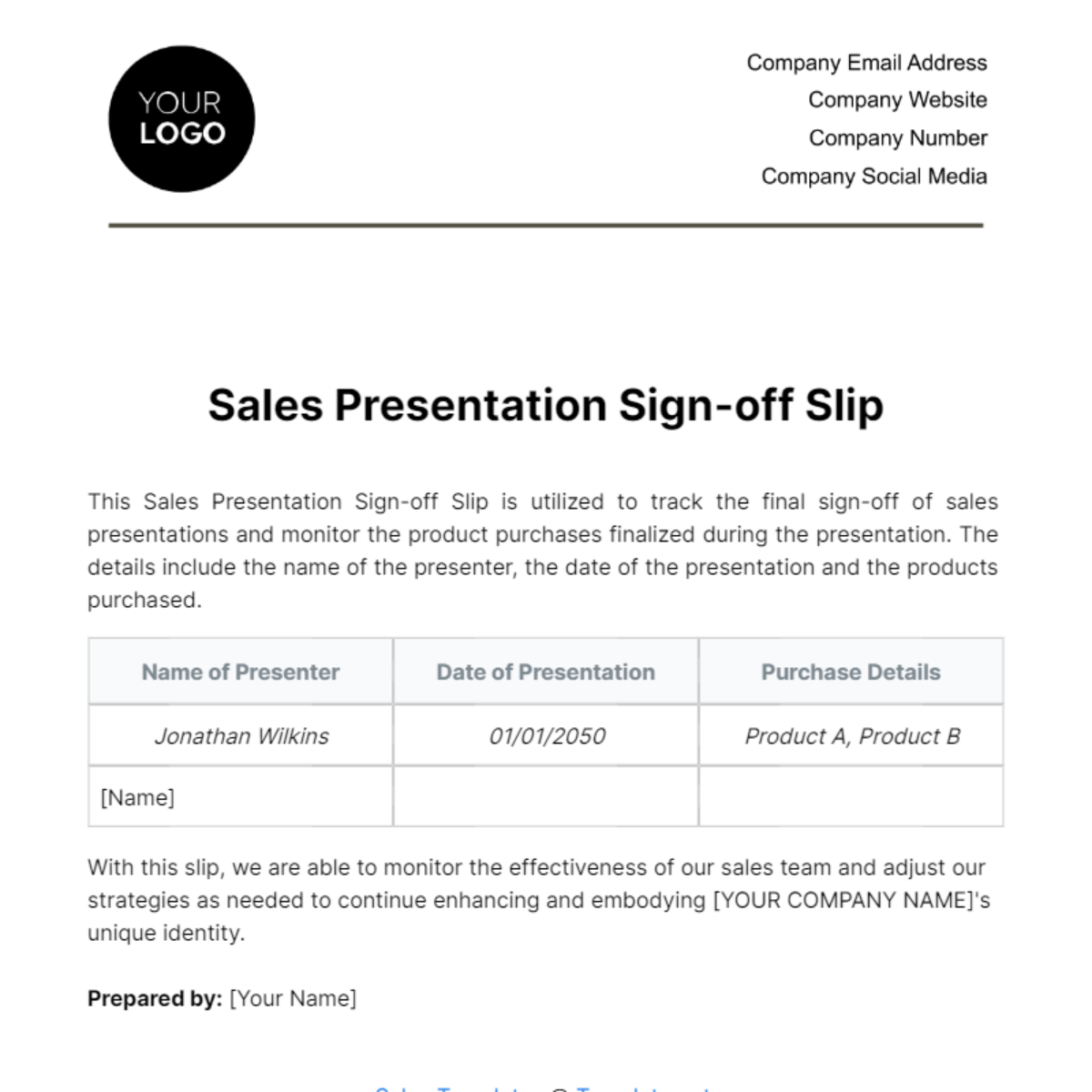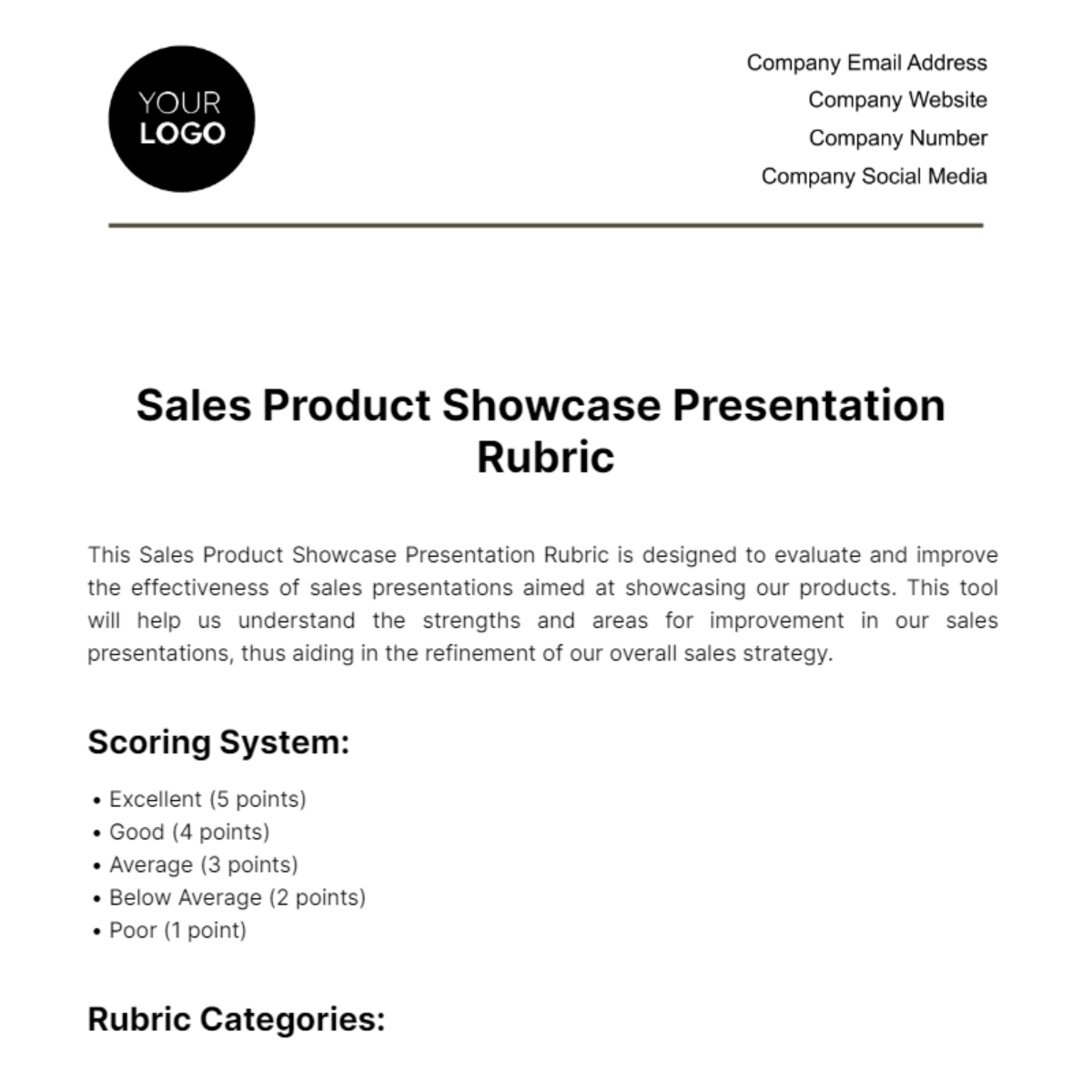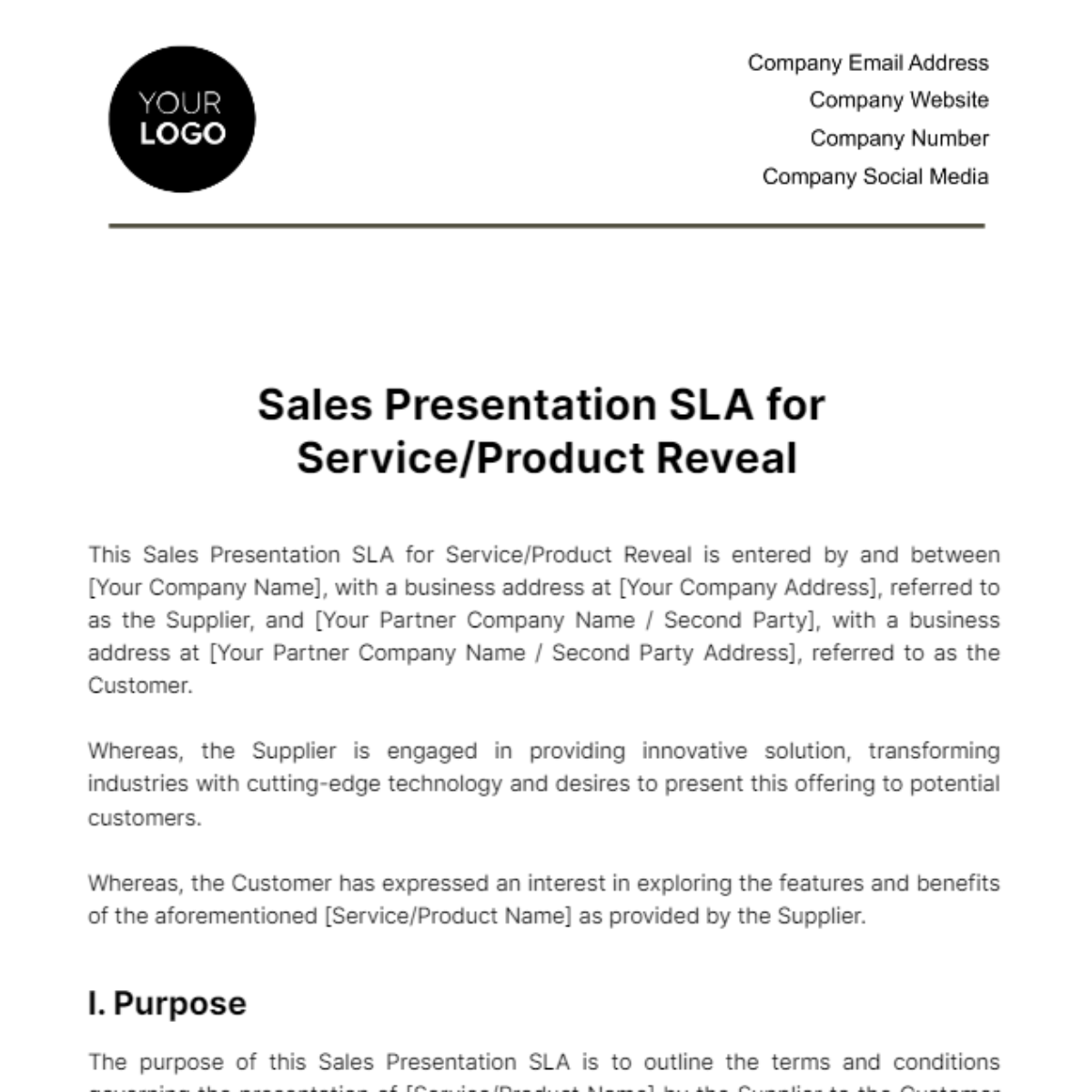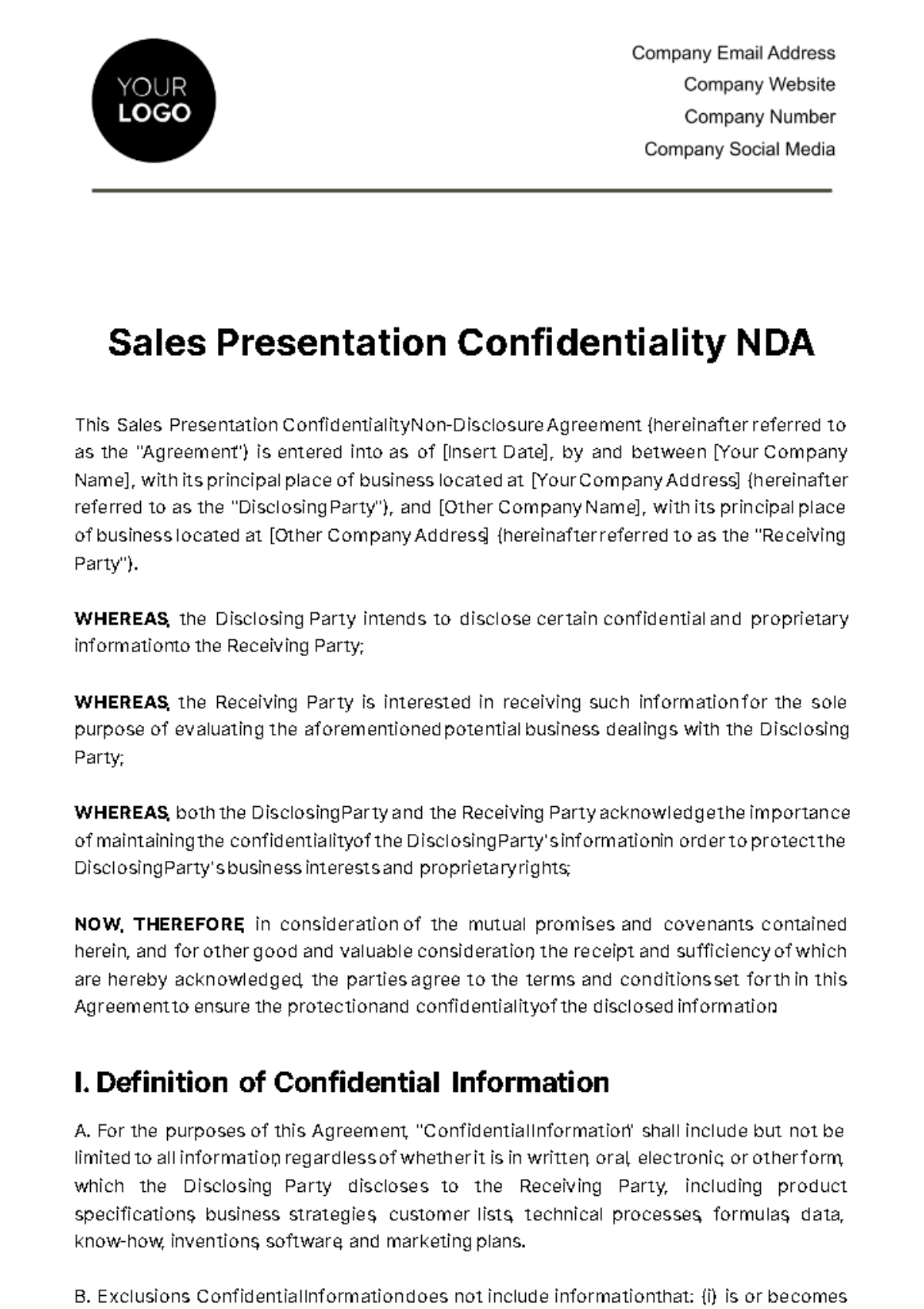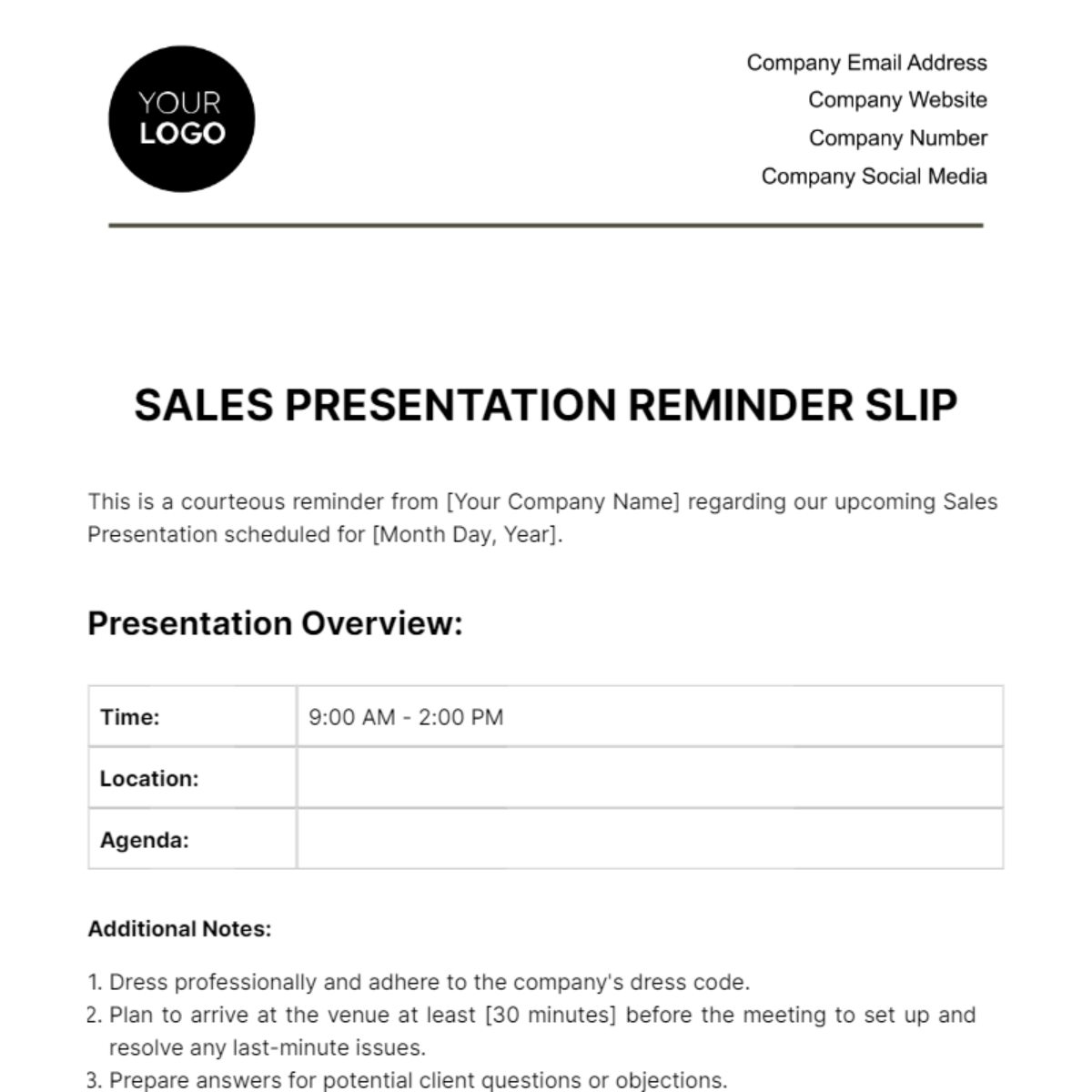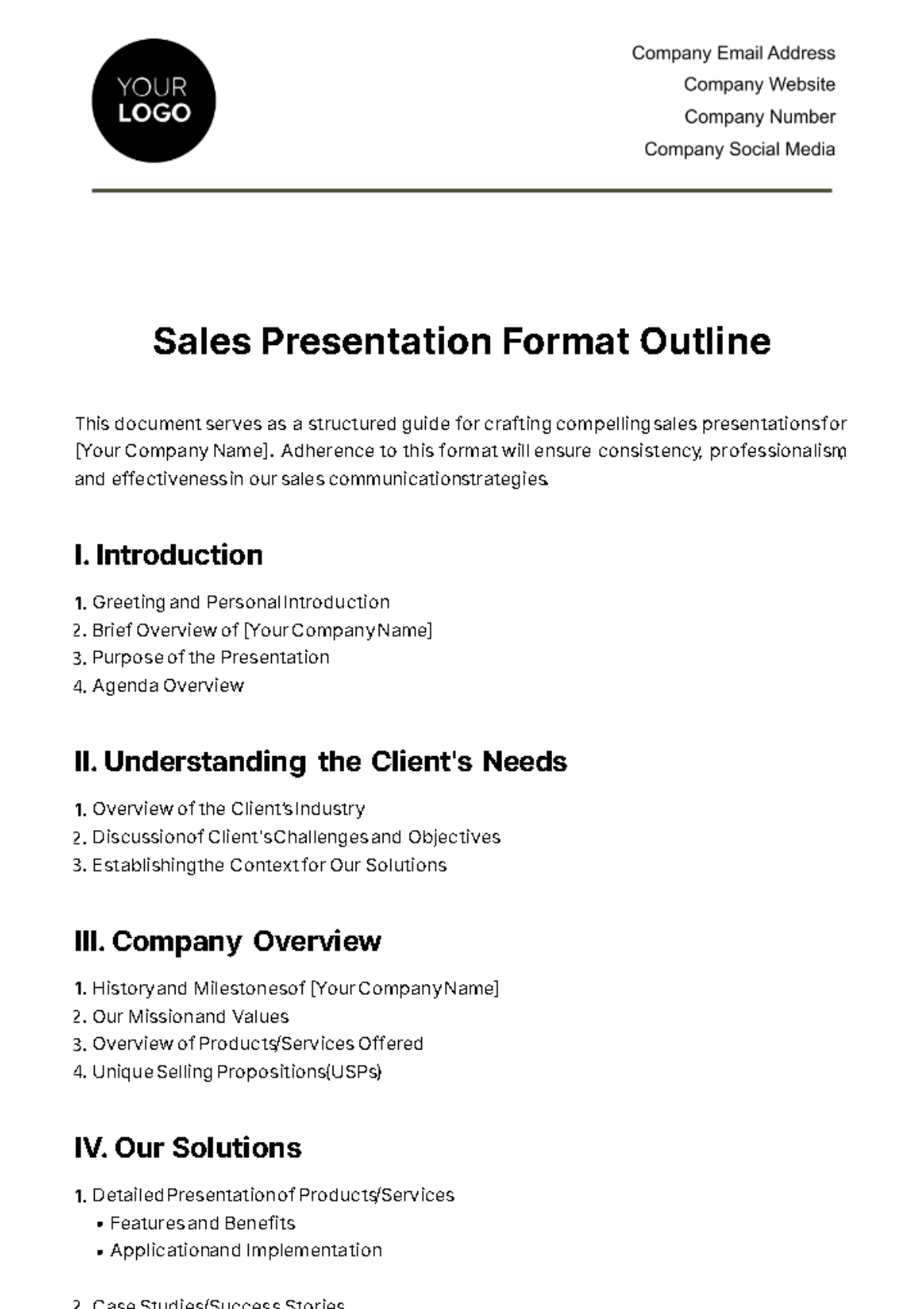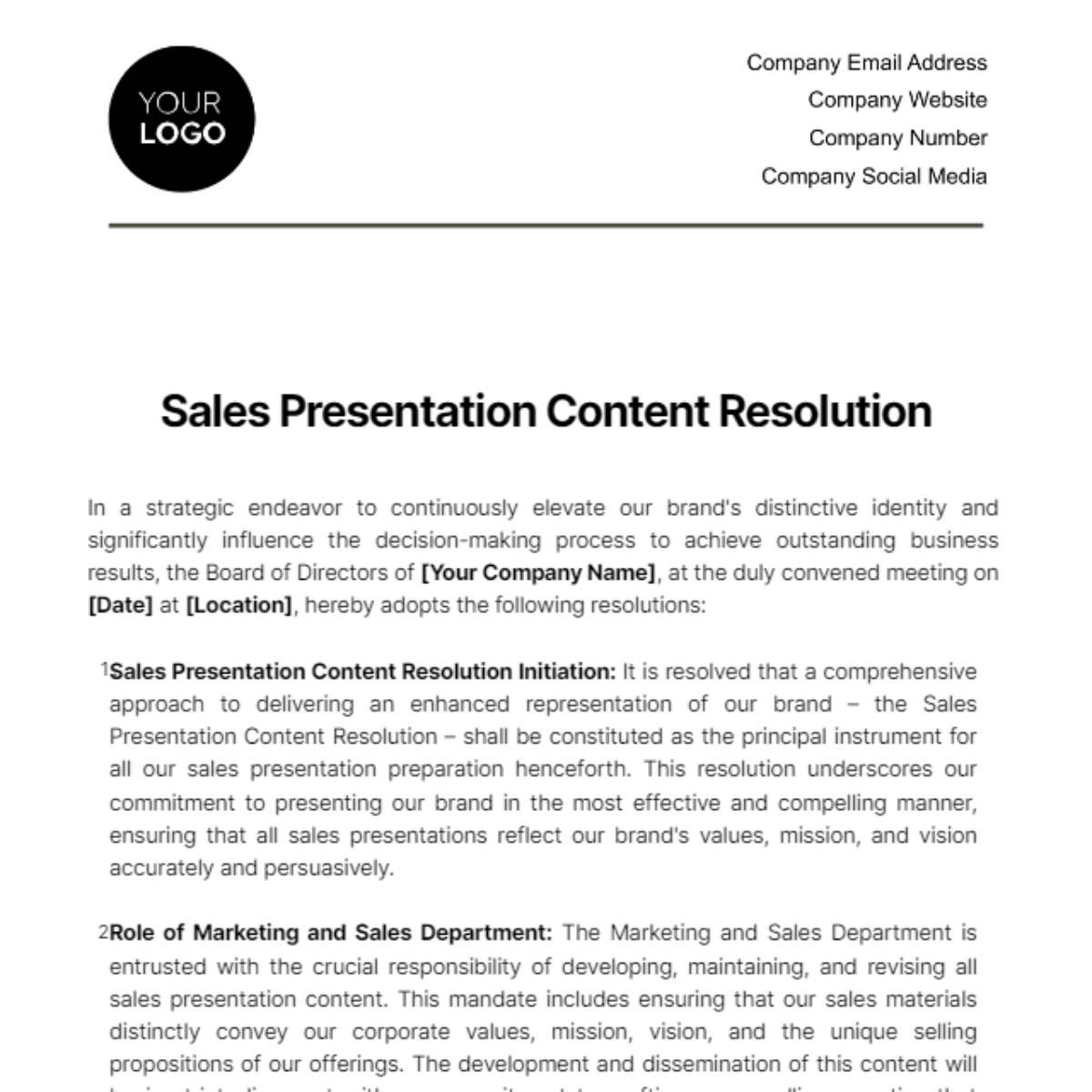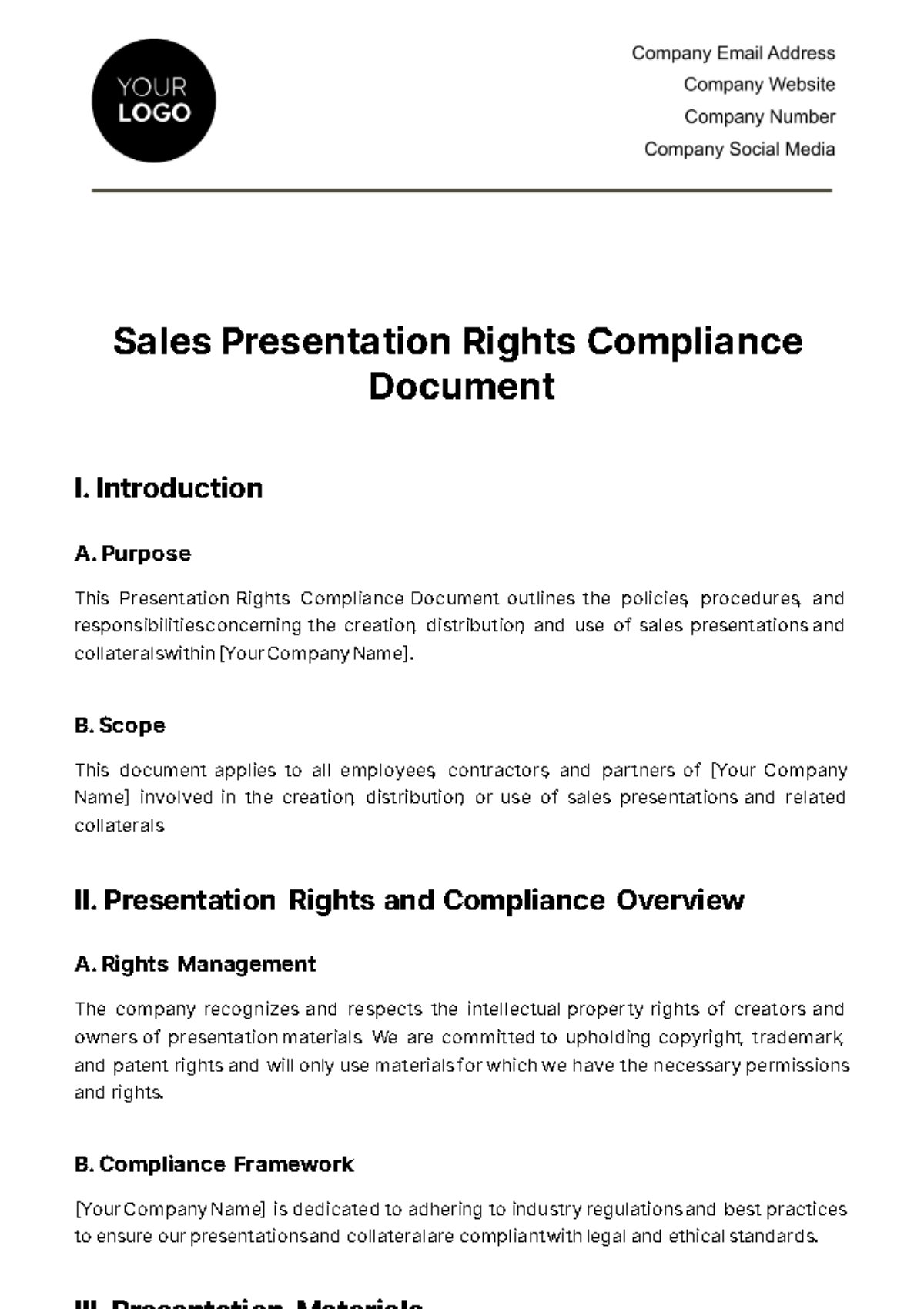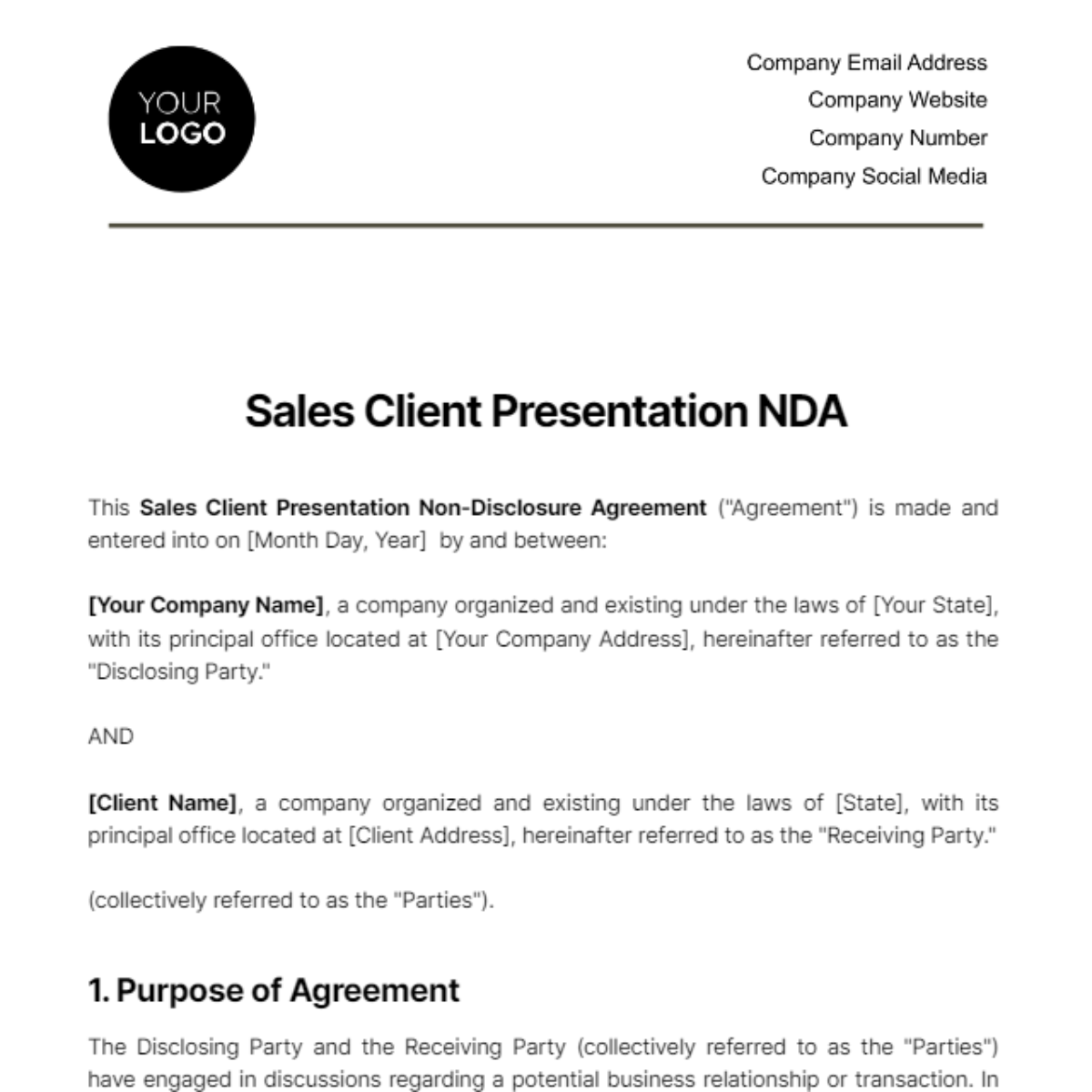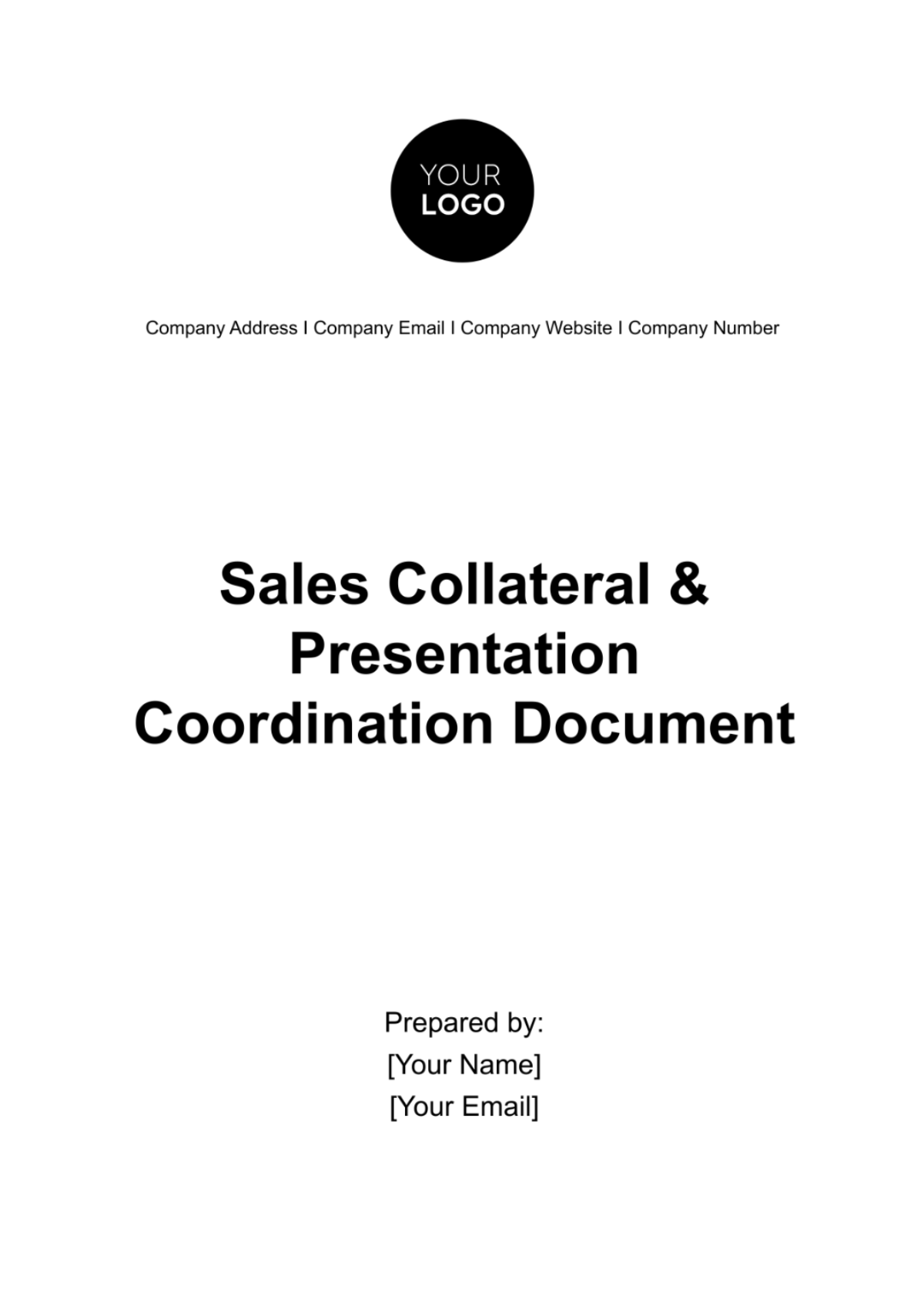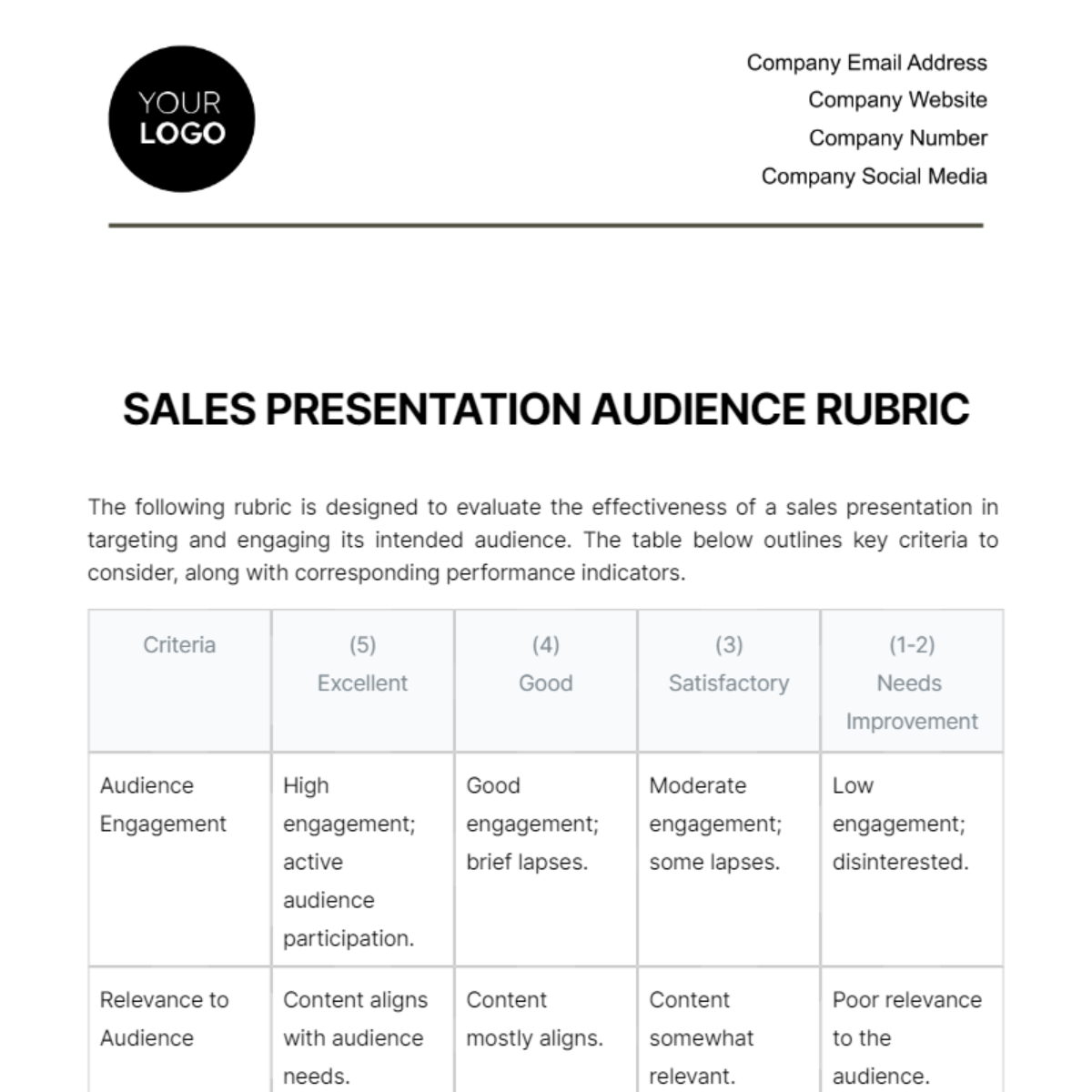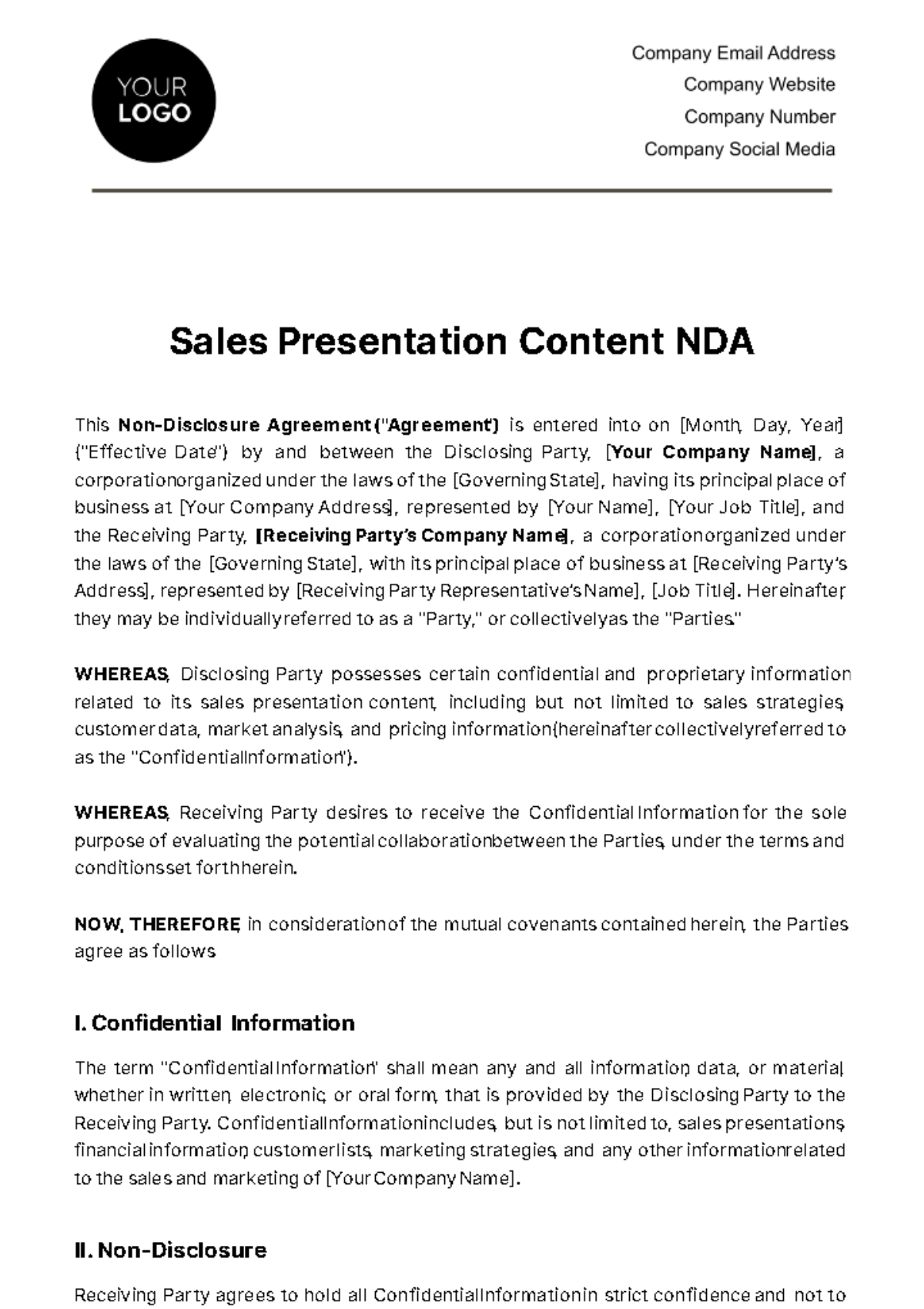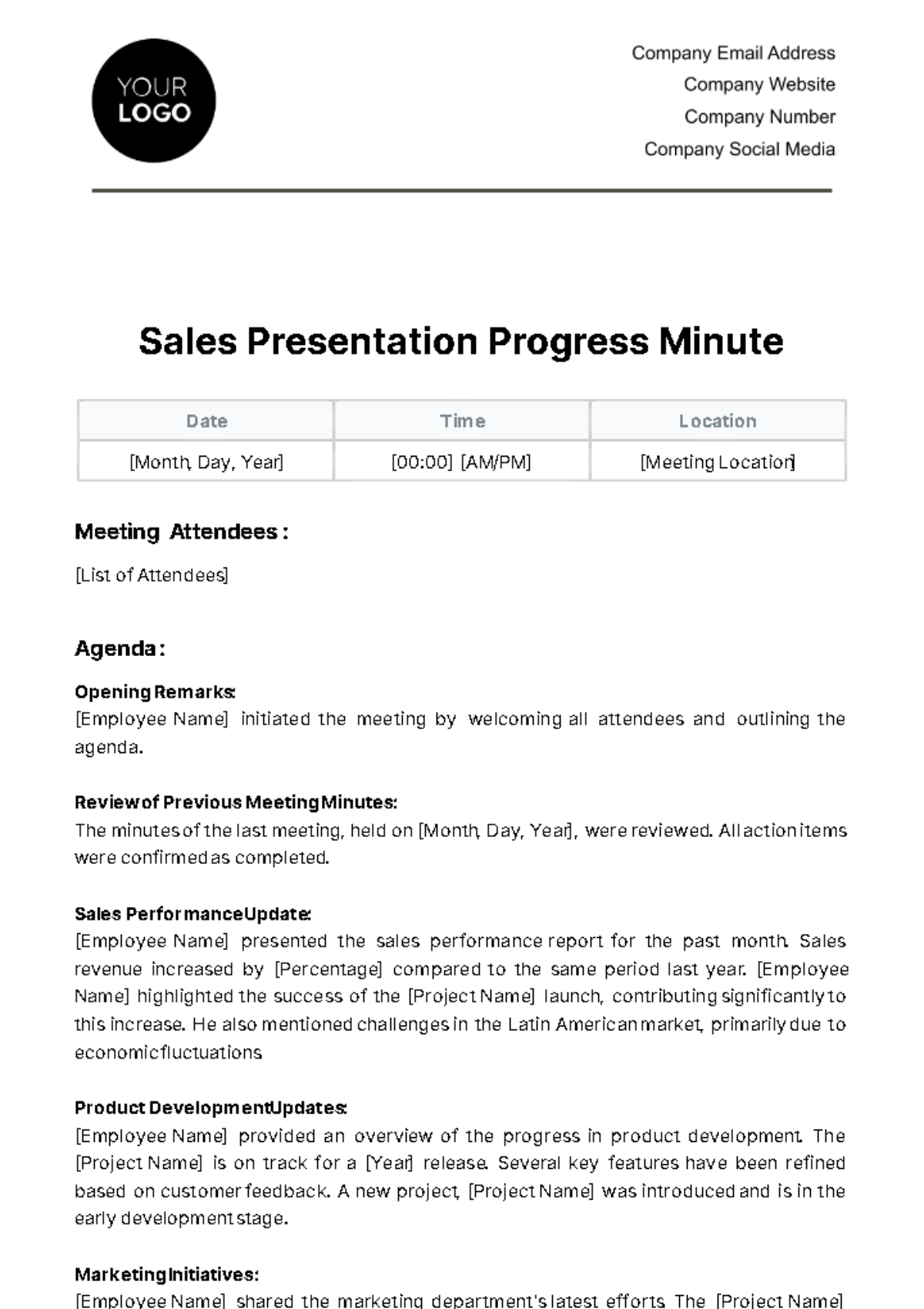Sales Research on Effective Presentation Techniques
I. EXECUTIVE SUMMARY
In an increasingly competitive and digitally-driven business environment of the modern era, effective presentation techniques have taken center stage. This research serves as a comprehensive guide to mastering the art of presentations, a vital skill transcending industries and sectors. We delve into the core components that empower you to create persuasive, engaging, and impactful presentations that not only captivate your audience but also drive sales and enhance your brand's success.
This research draws from a wealth of industry experience and the latest insights into the evolving dynamics of business communication. It equips you with practical knowledge, strategies, and actionable steps that will significantly elevate your presentation game and, in turn, contribute to your company's growth and success.
II. INTRODUCTION
In an age where digitalization, globalization, and rapid technological advancements redefine the way businesses operate, the power of effective presentation techniques cannot be overstated. Regardless of your industry, whether you're a startup entrepreneur, a corporate executive, a sales professional, or an educator, the ability to convey your ideas and messages persuasively is a fundamental skill that transcends boundaries.
Effective presentations are not just about delivering information; they are about captivating your audience, influencing decisions, and leaving a lasting impact. In a world where attention spans are shrinking, and the competition for engagement is fierce, understanding and harnessing the art of effective presentations is crucial.
This research prepared by [Your Company Name] aims to provide you with a roadmap to navigate this dynamic landscape, offering insights and strategies that are adaptable to different businesses and industries. Whether you're pitching a product, training your team, seeking investment, or simply communicating your vision, the techniques and principles discussed here will empower you to become a compelling and persuasive presenter.
III. THE IMPORTANCE OF EFFECTIVE PRESENTATION TECHNIQUES
In the modern business landscape, effective presentation techniques hold a pivotal role in achieving success and driving sustainable growth. The modern world is characterized by ever-evolving technologies, a rapidly changing global economy, and a highly competitive market. In this context, the ability to deliver compelling and persuasive presentations is not just a valuable skill; it is an absolute necessity for businesses of all shapes and sizes.
Winning Client Trust
In the digital age, establishing and maintaining trust with clients is a significant challenge. Effective presentations instill trust by demonstrating a profound understanding of clients' needs and providing clear, actionable solutions. A well-structured presentation can convey your commitment to their success, fostering trust and long-lasting relationships.
Convincing Investors
Investors, whether they are venture capitalists, angel investors, or stakeholders within your organization, require presentations that showcase the potential return on investment. Effective presentations not only articulate the business's value proposition but also inspire confidence, making investors more likely to support your initiatives.
Training and Motivating Teams
For businesses, internal presentations are just as crucial as external ones. The ability to deliver training and motivational presentations empowers you to nurture a talented workforce. These presentations boost morale, enhance productivity, and align your team's efforts with company objectives.
Demonstrating Expertise
In a world inundated with information, establishing your expertise is an ongoing challenge. Effective presentations provide a platform to convey your knowledge, experience, and thought leadership. They position you and your organization as authorities in your field, attracting both clients and opportunities.
Effective presentation techniques are not confined to one particular industry or business size. They are the common thread that weaves through successful endeavors, enabling businesses to thrive in an era marked by change and complexity.
IV. KEY ELEMENTS OF AN EFFECTIVE PRESENTATION
In a dynamic business landscape, understanding the fundamental components of an effective presentation is pivotal to success. These key elements go beyond simply delivering information and delve into the realm of captivating and persuading your audience:
KEY ELEMENTS | DESCRIPTION |
Clear Objectives | Define the purpose of the presentation. What do you aim to achieve? A clear objective not only guides your content but also ensures your audience knows what to expect. |
Engaging Storytelling | Craft a narrative that captivates the audience, using anecdotes and real-life examples. |
Relevance to the Audience | Analyze your audience's demographics and needs, and tailor your message to address their specific concerns. A presentation that resonates with your audience is far more likely to yield positive results. |
Credible Sources and Data | Back your claims with trustworthy sources and data to build credibility. It builds trust and reassures your audience that your presentation is rooted in fact, not conjecture. |
Compelling Visuals | Use infographics, charts, and images to enhance your message without overwhelming the audience. |
Interaction and Engagement | Encourage questions and interactions to keep the audience engaged and involved. This fosters a sense of participation and helps maintain engagement. |
Effective Use of Technology | Embrace technology like VR, AR, and interactive platforms for modern, engaging presentations. |
Adaptability | Be ready to pivot in response to feedback or unforeseen circumstances to keep your message relevant. Flexibility ensures your message remains relevant and on track. |
V. AUDIENCE ANALYSIS
In the modern business landscape, audience analysis has become more critical than ever. A one-size-fits-all approach no longer suffices, as consumers and stakeholders are diverse and well-informed. Understanding your audience is the bedrock upon which you build a presentation that resonates and drives action. Here's how to master audience analysis:
Demographics: Start by understanding the demographics of your audience. Consider factors such as age, gender, location, and occupation. A presentation for a tech-savvy Gen Z audience will differ significantly from one targeting Baby Boomers. Tailor your language, visuals, and examples accordingly.
Psychographics: Dive deeper into the psyche of your audience. What are their values, beliefs, and lifestyles? Are they risk-takers or risk-averse? Are they environmentally conscious or driven by cost savings? Knowing their psychographics helps you frame your message in a way that aligns with their core values.
Needs and Pain Points: What challenges does your audience face, and how can your product or service address these pain points? By addressing their specific needs, you demonstrate that you understand and empathize with their situation. It's not just about selling a product; it's about offering a solution to their problems.
Knowledge Level: Assess the knowledge level of your audience regarding the subject matter. Are they experts in your field, or do they need a more basic introduction? Pitching your presentation at the right level of complexity ensures you neither overwhelm nor bore your audience.
Communication Preferences: Consider how your audience prefers to consume information. Some may prefer detailed reports, while others might respond better to visual presentations or interactive discussions. Tailor your delivery method to align with their communication preferences.
Objections and Concerns: Anticipate objections or concerns your audience might have about your product or service. Address these proactively within your presentation to build trust and credibility.
Engagement Factors: Identify what engages your audience. Do they respond well to humor, case studies, or interactive elements? Incorporate these elements into your presentation to keep your audience engaged and attentive.
Cultural Sensitivity: In a globalized world, be aware of cultural differences. What is acceptable in one culture may be offensive in another. Ensure your presentation is culturally sensitive and respectful.
Feedback Mechanisms: After your presentation, create avenues for feedback. This not only demonstrates your commitment to continuous improvement but also provides valuable insights for refining your presentation techniques for future audiences.
VI. CONTENT DEVELOPMENT
Here, we delve into the essential strategies for crafting compelling content that resonates with your audience and drives your message home.
A. Structured Messaging
Effective content development starts with a well-structured message. Your presentation should have a clear and logical flow, guiding the audience from the introduction to the conclusion seamlessly. The following key components are integral to structured messaging:
Introduction: Begin with a hook to capture attention, followed by a concise presentation of the main topic and the objectives of your presentation.
Main Body: Here, present your key points, arguments, and evidence in a logical order. Use persuasive language and storytelling techniques to engage your audience emotionally and intellectually.
Transitions: Smooth transitions between sections maintain the flow of your presentation. They help your audience navigate through the content effortlessly.
Conclusion: Summarize your key points, restate your main message, and provide a clear call to action or takeaway for your audience.
B. Visual Aids
Visual aids are invaluable in complementing your message. When used effectively, they enhance understanding and retention. Ensure the following considerations when incorporating visual aids:
Relevance: Every visual aid should directly support the point you are making. Irrelevant visuals can distract and dilute your message.
Clarity: Keep visuals simple and easy to understand. Charts, graphs, images, and infographics should be clear and uncluttered.
Consistency: Maintain a consistent visual style throughout your presentation to reinforce your brand and maintain professionalism.
Engagement: Utilize visuals that engage the audience, such as dynamic animations or interactive elements in virtual presentations.
C. Persuasive Storytelling Techniques
Storytelling is a potent tool in any presentation. Weaving a narrative into your content can make your message more relatable and memorable. Consider these storytelling techniques:
Character Arcs: Create relatable characters or personas to illustrate your points. Their journeys can exemplify the challenges and solutions you're presenting.
Conflict and Resolution: Storytelling thrives on conflict and its resolution. Highlight problems your audience faces and how your product or service provides solutions.
Emotionally Resonant Details: Use vivid descriptions and relatable situations to evoke emotions and connect with your audience on a personal level.
VII. DELIVERY METHODS
Here are key strategies to ensure your message reaches its target effectively:
A. In-Person Presentations
In a world where face-to-face interactions remain invaluable, mastering in-person presentations is paramount. Implement the following tips for success:
Engaging Body Language: Effective non-verbal cues, such as maintaining eye contact, confident posture, and expressive gestures, help connect with your audience.
Voice Modulation: Vary your tone and pace to emphasize key points and maintain audience engagement.
Interactive Engagement: Encourage audience participation through questions, discussions, and activities to create a more memorable and participatory experience.
B. Virtual Presentations
With the rise of virtual communication, adapting your presentation techniques for online platforms is crucial. Consider the following:
Technological Proficiency: Ensure you are proficient with the chosen virtual platform, reducing technical glitches and disruptions.
Visual Appeal: Utilize engaging visuals, such as slides, infographics, and videos, to maintain audience interest.
Engage Through Chat and Polls: Use interactive features like chat, polls, and Q&A to encourage real-time interaction and feedback.
Practice and Rehearse: Pre-recorded presentations should be well-rehearsed to maintain a smooth and engaging delivery.
C. Webinars and Online Seminars
For educational and informational presentations, webinars and online seminars have gained prominence. Effective delivery involves:
Well-Structured Content: Create a logical flow of information, emphasizing key takeaways and ensuring a clear learning path.
Interactive Elements: Include quizzes, polls, and breakout sessions to encourage active participation and knowledge retention.
Expert Guests: Invite subject matter experts or guest speakers to diversify perspectives and add credibility to your content.
D. Pre-recorded Videos
The convenience of pre-recorded videos is undeniable, and they can be a powerful tool in your presentation arsenal. To make them effective:
Scripted Narration: Carefully craft a compelling script that balances information with storytelling, making your video engaging and memorable.
Visual Storytelling: Use visuals, animations, and graphics to complement your message and enhance viewer understanding.
Short and Precise: In the era of limited attention spans, keep videos concise while delivering valuable insights.
E. Interactive Presentations
Interactive presentations, whether delivered in-person or virtually, encourage participation and engagement. Incorporate:
Audience Participation Tools: Utilize tools that enable live polls, quizzes, and interactive discussions to make the presentation a two-way conversation.
Gamification Elements: Incorporate gamification to make the presentation more enjoyable and memorable for your audience.
VIII. VISUAL AIDS
Visual aids play a pivotal role in enhancing audience engagement and comprehension. Here are key considerations for utilizing visual aids to their full potential:
KEY CONSIDERATIONS | DESCRIPTION |
Visual Consistency | Maintain a consistent and professional look across all visual aids to reinforce your brand identity. |
Simplicity and Clarity | Keep visual aids clear and concise, avoiding clutter and ensuring they align with your spoken content. |
Relevance | Choose visuals that directly support your points and are relevant to your presentation's objectives. |
Storytelling | Leverage visuals to enhance storytelling, evoking emotions, illustrating concepts, and providing examples. |
Accessibility | Ensure visual aids are accessible to all, providing alternative formats for visually impaired individuals. |
Engagement | Utilize interactive elements like clickable infographics, 3D models, or virtual reality experiences. |
Technical Proficiency | Stay updated on presentation software and technologies, and rehearse their integration into your talk. |
Testing and Rehearsal | Test all visual aids, equipment, and have backup plans for potential technical glitches before presenting. |
Engaging Graphics | Use compelling data-driven graphics like charts, graphs, and before-and-after comparisons for complex data. |
Visual Storyboarding | Plan your presentation's flow with a visual storyboard to ensure a logical and engaging narrative. |
IX. MEASURING PRESENTATION SUCCESS
Evaluating the effectiveness of your presentations is essential for continual improvement and demonstrating a return on investment. Here are key elements to consider:
Audience Feedback: Collect feedback through surveys, post-presentation discussions, or online forms. This qualitative data helps you understand how well your message resonated and if there were any areas of improvement.
Conversion Metrics: For sales presentations, measure conversion rates. Did the presentation lead to more inquiries, sign-ups, or actual sales? Track these metrics to assess the direct impact of your presentation on your bottom line.
Engagement Metrics: Analyze data related to audience engagement during the presentation. In virtual presentations, this may include tracking the duration participants stayed engaged and whether they interacted with the content (e.g., clicked on links, asked questions).
Content Performance: Utilize analytics tools to assess the performance of individual slides or sections. Identify which parts of your presentation were the most engaging and which may have lost your audience's interest.
Qualitative Evaluation: Conduct post-presentation debriefs with your team to gather insights. What worked well, and what could be improved? This internal feedback helps refine your future presentations.
X. CONCLUSION
Effective presentation techniques are not a one-size-fits-all solution; they're a dynamic practice that evolves with changing audience expectations and technological advancements. In a very dynamic business world, staying ahead of the curve is crucial. By integrating the strategies discussed in this research, your team will be well-equipped to adapt and thrive in various industries.
